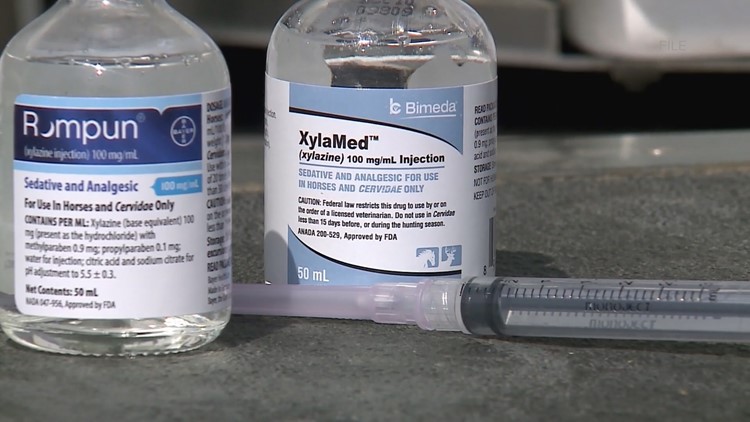COLUMBUS, Ohio — Gov. Mike DeWine has signed an executive order directing the State of Ohio Board of Pharmacy to immediately classify a veterinary sedative as a controlled substance.
The order makes Ohio one of the first states in the nation to make the drug a controlled substance.
Xylazine is a central nervous system depressant used in veterinary medicine as a sedative, anesthetic and muscle relaxant. According to the Drug Enforcement Administration, the drug is used on animals such as cattle, sheep, horses, deer and elk.
The sedative, which is not approved for human consumption, has increasingly been found in the illegal drug supply in Ohio, according to DeWine. It is frequently mixed with heroin, fentanyl or new synthetic opioids such as nitazene.
"This lethal drug has dangerous side effects which can’t be reversed by naloxone, so there is no way to reverse its impact on people,” said DeWine. “The rate of overdose deaths involving a mixture of xylazine and other drugs is increasing at an alarming rate, which is exactly why we need to take action now."
The Ohio Department of Health reports overdose deaths involving xylazine have increased each year in the state since 2019, with 15 in 2019, 45 in 2020 and 75 in 2021. Although data for 2022 is not complete, the state recorded 113 xylazine-involved overdose deaths as of March 14, 2022.
According to a release from the governor’s office, xylazine may worsen respiratory depression when used in combination with an opioid in the event of an overdose.
Human use of the drug is also known to cause debilitating skin ulcers that cause tissue decay and bacterial infections, which can lead to amputations at higher rates than those who inject other drugs.
DeWine says his emergency order was promoted by information gathered by the Ohio Narcotics Intelligence Center (ONIC). This early detection process allows ONIC to identify, analyze and triage information on emerging drugs of abuse that are not controlled substances.
According to ONIC, some crime labs in the state estimate that 25% to 30% of today’s fentanyl cases also involve xylazine. The presence of the drug in overdoses may be underreported because most labs do not test for it.
DeWine says classifying xylazine as a controlled substance will allow for more testing and make the sale and trafficking of it for illicit use a criminal offense.
Veterinarians will still be able to use xylazine on animals but must obtain a certain license by June 30 to be permitted to order it from licensed wholesalers.



